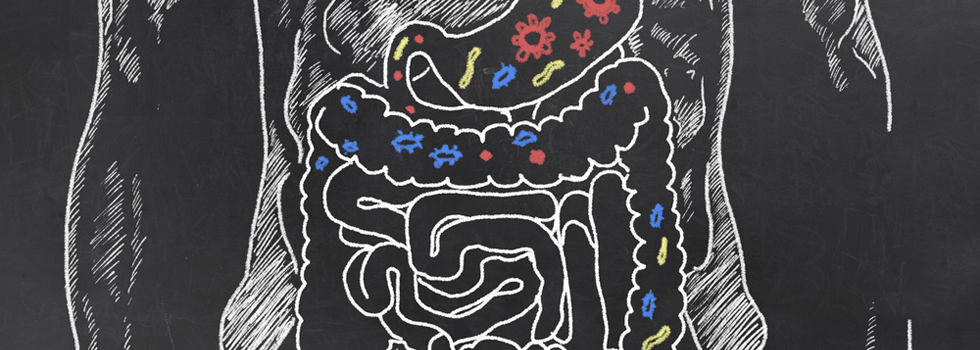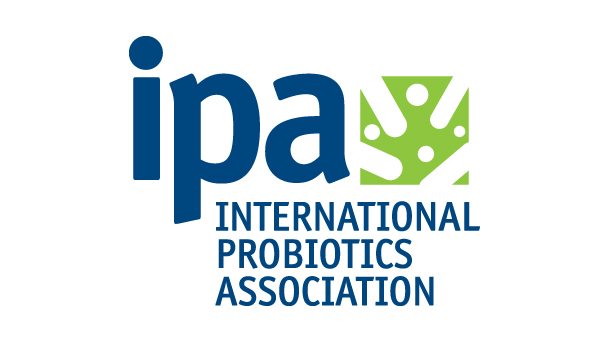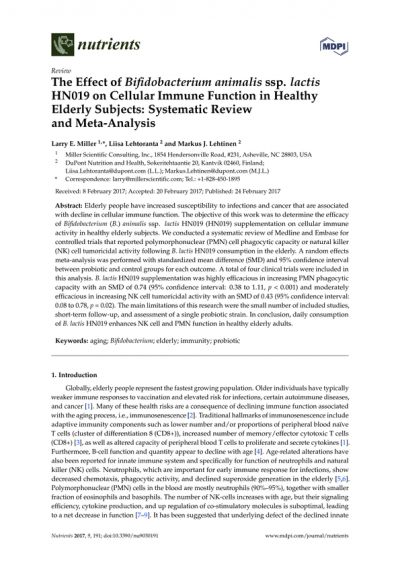Promotional Features
Evaluation of the State of Science Outside of Conventional Probiotic Usage Paper #1: Probiotics and Metabolic Syndrome
Metabolic disorders including hypertension, dyslipidemia, obesity and diabetes reflect a complex tangle of interfaces with the microbiota representing only one part of the multiple factors at play.
HYPERTENSION
Probiotics may positively influence blood pressure by producing peptides from milk proteins which act on angiotensin-I-converting enzyme (ACE) inhibitors which are integral to control.
Recent research studies have shown that soy peptides with inhibitory activity against ACE could be produced by fermentation with probiotics. In addition, there is strong evidence showing that probiotics may positively affect hypertension via the mediation of phytoestrogens. Probiotics may also improve lipid profiles and insulin resistance, both which can be antihypertensive.
A 2014 meta-analysis of nine randomized, controlled trials revealed that: “consuming probiotics may improve BP (blood pressure) by a modest degree, with a potentially greater effect when baseline BP is elevated, multiple species of probiotics are consumed, the duration of intervention is ≥8 weeks or daily consumption dose is ≥10(11) colony-forming units.”
DYSLIPIDEMIA
Microbial activities are known to benefit lipid profiles which are often predictors of cardiovascular disease risk. Microbiota activities promote bile acid biotransformation in vivo to regulate fat digestion, and affect lipid metabolism to decrease serum lipids.
Recent studies have demonstrated that lactobacilli or bifidobacteria could exhibit hypolipidemic effects in animal models and in humans.
Look at some of the most recent evidence:
Animals » Saccharomyces boulardii significantly reduced both diet-induced hypercholesterolemia and triglycerides in hamsters.
» A heat-killed strain of Lactobacillus reuteri reduced total cholesterol and LDL-cholesterol in hamsters.
» Lipid metabolism of hyperlipidemic rats was improved by regulating the gut microbiota with supplementation of a strain of Lactobacillus rhamnosus or its fermented milk for 28 days.
» Strains of Lactobacillus acidophilus and Bifidobacterium breve reduced serum levels of lipid in obese rats.
» A strain of Lactobacillus reuteri reduced total cholesterol, triglyceride, and low density lipoprotein.
» Strains of Lactobacillus plantarum may protect against cardiovascular disease by lipid metabolism regulation in hyperlipidemic mice.
Humans » Three strains of bifidobacterium in conjunction with diet therapy showed benefits in children with dyslipidemia.
» Probiotic yogurt when compared to control milk did not significantly alter serum lipid concentrations.
In conclusion, whereas promising data exist for probiotic use in animal models, such data is inconsistent in human studies due to the difficulty of controlling variables including genetics, diet, exercise and general health. More work must be done.
OBESITY
Obese and normal weight individuals harbor different sets of gut microbes with some obese subjects showing an increase in the Firmicutes/Bacteroidetes ratio over lean ones. The microbial link to obesity is evidenced by:
» After gastric bypass surgery, bacterial populations in obese people change to increased Proteobacteria and Bacteroidetes and a decrease in Firmicutes and Actinobacteria.
» Infant microbiota is affected by mode of delivery and type of feeding. Both have shown impact on obesity later in life.
» Microbes produce metabolites such as short chain fatty acids (SCFA) which are considered in lipid metabolism along with energy harvest.
However, a big question is whether dysbiosis is a cause or effect of obesity?
Gut microbes may direct fat accumulation in several enterprising ways, according to a 2015 review article:
» by harvesting and storing energy from food
» producing short chain fatty acids which act as energy sources
» regulating gastrointestinal hormone and enzyme activity to promote fat mass accumulation
» triggering inflammation via lipopolysaccharides
Indeed, several different species of lactobacilli, part of the Firmicutes phyla, have been associated with one or more of the above changes. For example, Lactobacillus reuteri was associated with obesity in one study but results were controversial.
However lactobacilli are also linked with weight loss in published studies, unlike the above behavior:
» A strain of Lactobacillus gasseri from human breast milk was given to rats on a high-carbohydrate diet. The percent increase in body weight and fat pad mass was lower in the test group.
» In a Swedish study, another lactobacillus decreased fat storage by altering lipoprotein lipase.
» Lactobacillus plantarum is another showing potential. In mice, it reduced fat cell size.
Then there are bifidobacteria, which are some of the most numerous probiotics in the gut.
» Bifidobacterium was given to high fat diet-induced obese rats in a 2011 study. Results: reduced body and fat weights as well as other markers of a high-fat diet.
In the microbiota of both obese animals and humans there is an increased ratio of the gram positive Firmicutes to the gram negative Bacteroidetes (the obesity pattern). A 2015 Medline search assessed if altering microbe ratio in animals and humans would prevent obesity or reduce body weight in the obese subject. In animals but not in humans altering the microbiota can result in weight loss and weight gain which does not occur in humans. This suggests that in humans the changes in gut microbiota are an association with rather than the cause of obesity.
INSULIN RESISTANCE AND DIABETES
Poor blood sugar control is multifactorial:
» Pancreatic beta cell destruction (type 1 diabetes). Some suggest dysbiosis may contribute to demise by not preventing antigen attacks on beta cells.
» Stresses of pregnancy (gestational diabetes). See Probiotics in Reducing the Risk of Gestational Diabetes which appears in Diabetes, Obesity and Metabolism online in April of 2015.
» Impaired insulin production and insulin resistance (type 2 diabetes)
It is the poor glycemic control of type 2 diabetes and metabolic syndrome that we address here.
What is known:
» Some studies indicate that type 2 diabetics have fewer Firmicutes and more Bacteroidetes and Proteobacteria than controls.
» Insulin resistance and dysbiosis can be induced quickly in rats that have been overfed high-fat foods.
» One recent study revealed that probiotic supplementation preserved glycemic control in humans during a high-fat diet period.
The pathophysiology of insulin resistance stems from multiple pathways but emerging evidence suggests that dysbiosis – imbalance of the gut microbial ecosystem – may play a role, leading to the following:
» Increased gut permeability
» Metabolic endotoxemia
» Systemic low-grade inflammation
And flipping it around, a healthy microbiota may restore normal conditions. One recent study found that transfer of intestinal microbiota from lean donors to individuals with metabolic syndrome increased insulin sensitivity.
Yet the data on the use of probiotics to improve glycemic control is inconsistent. A 2015 meta-analysis of randomized controlled trials concluded that probiotics may have a modest effect on glycemic control, but that even small changes can be beneficial. Another meta-analysis done around the same time recorded significant drops in HbA1c (a biomarker which rises as blood sugar control worsens) but no differences in fasting blood glucose or insulin concentrations for those consuming probiotics.
Probiotics then may be tapped for specific abilities to treat or prevent metabolic disorders. Fortifying intestinal mucosal walls and producing butyrate are two mechanisms of actions according to a recent review in Diabetes and Metabolism Journal. Prebiotics are also essential to improve the function of probiotics.
However inconsistent the data, probiotics are known to reduce the core problems inherent in guts of diabetics: excess gut permeability, endotoxemia and inflammatory response. A healthy microbiota may increase insulin sensitivity and reduce autoimmune response.





